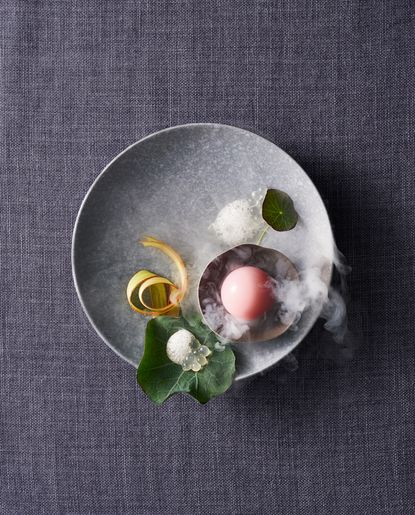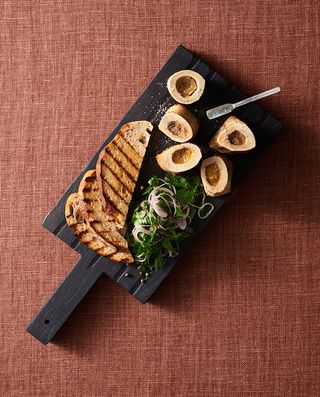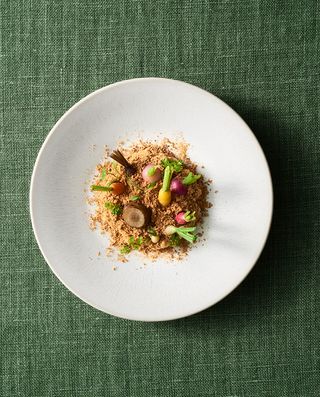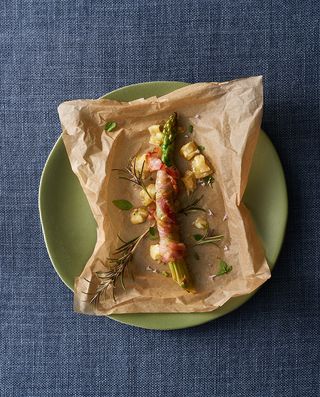The plate shift: front-line food trends of the past 20 years

In the mid-1990s, Nobu and its exotic fusion of flavours was the height of gastronomy. Eating local, seasonal foods was still an ideal with seemingly little ambition, foraging went hand in hand with meditation and moon cups, and fermentation was the result of bad housekeeping. How quickly things have changed. We’ve since seen a number of food movements, veering from futuristic molecular and deconstructivist cooking to the gastronomic upscaling of humble foods. Chefs have become our heroes and our holiday snaps now chiefly chronicle our culinary adventures. In the main, eating locally and seasonally with maximum freshness and minimal carbon footprint has been the response of a health-obsessed population seeking to banish obesity while addressing the sustainability of the world’s resources.
Here, we look at the food fashions that have taken us into the 21st century...
Molecular, 1994
Experimental chef Ferran Adrià led Spanish restaurant El Bulli in a new direction, inventing what's now known as molecular cuisine. Heston Blumenthal and the US' Grant Achatz joined him in using fogs, foams and chemistry to reconfigure food.
Nose tail, 2000
Fergus Henderson opened London's St John restaurant in 1994 and caused a stir by plating up trotters, tripe and testicles. The sustainability of this chimed with chefs around the world. Henderson first published the handbook Nose to Tail Eating in 2000.

Cutting board, £105, by Fuga, from Yod and Co; and marrow spoon, price on request, by Cedes Milano
Neo-Nordic, 2004
Claus Meyer opened Copenhagen's Noma in 2003, and together with chef René Redzepi developed a new interpretation of Nordic cuisine. Chefs used foraged pine, hay, seaweed, sheels, coastal and forest foliage, eschewing new technology in favour of pickling, smoking, and curing.
Gourmification, 2006
Upscaling has been going since the likes of S'mac in New York tarted up macaroni and cheese. Subsequently, chef Daniel Boulud stuffed his burger with braised ribs, foie gras and black truffle, and the Soho House Group spun chicken and chips with London's The Chicken Shop.
Shoot to root, 2012
Vegetables are no longer playing a culinary bit part. In London, Isaac McHale of the The Clove Club and Bruno Loubet at Zetter Townhouse have been key in making greens, from shoot to root, central to a dish, while the meat of the fish plays second fiddle, as a garnish.
As originally featured in the October 2016 issue of Wallpaper* (W*211)

Neo-Nordic, 2004. ‘Vuelta’ plate, £18, by Jars Céramistes

Gourmification, 2006. Cast-iron pan, £60, by Kamasada, from twentytwentyone

Shoot to root, 2012. ’Jardin De Maguelone’ plate, £9, by Jars Céramistes. All fabrics part of the Legacy collection, £87 per m, by Sheila Coombes, from Brian Yates
INFORMATION
Photography: Gustav Ålmestal. Food Stylist: Seiko Hatfield
Wallpaper* Newsletter
Receive our daily digest of inspiration, escapism and design stories from around the world direct to your inbox
-
 A new limited-edition Rhodes piano and Gibson doubleneck guitar aim for the stars
A new limited-edition Rhodes piano and Gibson doubleneck guitar aim for the starsThe new Rhodes Mk8 Earth Edition piano and Gibson Jimmy Page EDS-1275 Doubleneck guitar revisit classic instruments at a price
By Jonathan Bell Published
-
 The new interior design trends we spotted at Salone del Mobile 2024
The new interior design trends we spotted at Salone del Mobile 2024These are the interior design trends to look out for in 2024 and beyond, from soft upholstery to conversation pits and low dining
By Rosa Bertoli Published
-
 Tiffany & Co nods to its theatrical history with a surreal new campaign
Tiffany & Co nods to its theatrical history with a surreal new campaignTiffany & Co campaign ‘With Love, Since 1837’ sees Dan Tobin Smith and set designer Rachel Thomas create an offbeat set
By Hannah Silver Published